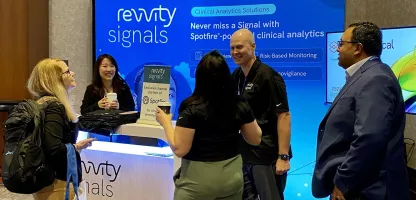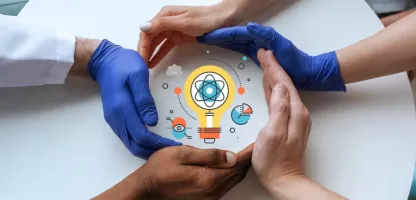Leading the Future of Scientific Innovation
Event Recap : Revvity Signals NEXUS Europe 2025
August 5, 2025 Read Blog
Mary Donlan, Ph.D.
Executive Director, Product Marketing
Event Recap : Revvity Signals NEXUS Europe 2025
August 5, 2025 Read Blog
Executive Director, Product Marketing

Signals One unifies and structures data to be AI-ready. Our automation allows AI and machine-learning tools analyze data so that scientists can focus on innovation.

Artificial intelligence (AI) and machine learning (ML) are revolutionizing the cybersecurity space. Learn how Revvity Signals uses AI and other techniques to protect data.

Signals One™ has RNA specific tools for leading biopharmaceutical companies to make data-driven decisions. Learn how we meet chemists and RNA biologists needs.

Pharmaceutical and biotechnology companies face many changes if the Biosecure Act passes into law. Learn how Revvity Signals solutions, such as Signals Synergy can aid the biotechnology sector.

Revvity Signals was first-to-market with SaaS software and integrates AI to help empower scientists. Read our interview with David Gosalvez to learn the future vision of Revvity Signals.

In 2024, Signals ChemDraw, Signals Clinical and Signals Synergy launched. Read how Revvity Signals supports new modalities in drug discovery and research development.

Revvity Signals handles all software development, allowing researchers to explore new drug therapies. Learn how our cloud-native software helps with performance, cost and scalability.

Artificial intelligence (AI) and machine learning (ML) are revolutionizing the cybersecurity space. Learn how Revvity Signals uses AI and other techniques to protect data.

Signals DLX can integrate any lab instrument or application with Signals Notebook. Learn how this provides more time for science, improves workflow and ends manual data entry.

PROTAC technology and TPD research present many opportunities in drug discovery. Learn how Signals One provides a comprehensive R&D workflow.


Signals One™ has RNA specific tools for leading biopharmaceutical companies to make data-driven decisions. Learn how we meet chemists and RNA biologists needs.

Revvity Signals offers AI solutions for R&D scientists and researchers. Learn how Signals One supports AI capabilities driving modern scientific discovery.

Revvity Signals helps take advantage of AI-ready data within antibody drug discovery. Learn how Signals Research Suite can help accelerate scientific.

Signals Synergy enhances collaboration and information between CROs and sponsors. Learn how Signals Synergy improves communication and project management with CROs.